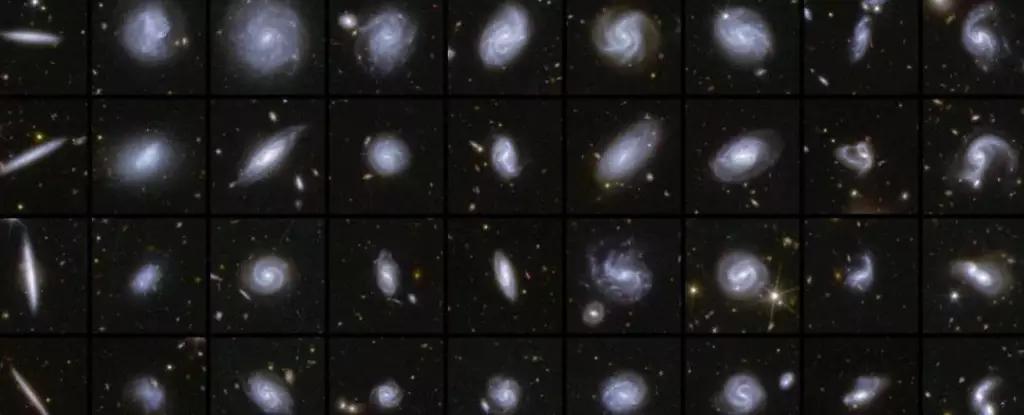In the realm of astronomy, few projects embody the pursuit of knowledge as profoundly as the European Space Agency’s (ESA) Euclid Space Telescope. Launched in July 2023, this groundbreaking observatory is not merely a technological marvel; it promises to catalyze our understanding of the universe’s fabric. By employing its advanced imaging capabilities, Euclid aims to dissect the complexities of cosmic phenomena such as dark matter and the expansion of the universe. With its magnificent first images now released, an exciting new chapter in cosmic exploration and understanding is upon us.
From Vision to Reality: Euclid’s Martial Combat Against Cosmic Questions
The immense capabilities of Euclid lie in its sophisticated design, featuring a powerful 600 mega-pixel camera that captures incredibly detailed images of distant astronomical objects. While its initial spectacle of images from iconic locations like the Perseus Cluster and the Horsehead Nebula captures the imagination, the telescope’s true mission transcends mere beauty. It seeks to unveil the mystery of how the universe expands—a quest paramount to our comprehension of cosmic evolution.
Euclid’s strategy leverages the wealth of data generated from imaging billions of galaxies up to 10 billion light-years away. By covering a staggering one-third of the night sky, Euclid endeavors to stitch together an unprecedented map of the cosmos, ultimately revealing insights into gravity’s role and the distribution of dark matter. The potential ramifications of this are tremendous, as understanding dark matter could radically alter our perception of the universe and its underlying principles.
The Significance of Deep Field Observations
Equally essential are the deep field observations that have just begun to emerge from Euclid’s data releases. These regions of the sky, where repeated imaging occurs, have historically been instrumental in furthering our knowledge about cosmic structure. Baubles from the vast expanse reveal a multitude of elements such as galaxy clusters and gravitational lenses—a phenomenon signaling the presence of massive celestial bodies bending light. How can such observations shape our understanding of the universe? The precedent set by Hubble’s deep field observations suggests that the revelations arriving from Euclid may similarly catalyze paradigm-shifting discoveries.
Prof. Carole Mundell, ESA’s Director of Science, articulated the telescope’s transformative potential aptly, stating that Euclid is “the ultimate discovery machine.” The implications of such discoveries are not merely academic; they influence our worldview, revealing the universe’s hidden forces and components. The initial scans, so far comprising over 26 million galaxies, signal just the tip of the iceberg in terms of the data that will be harvested, with future tasks projected to offer a comprehensive catalogue far exceeding anything previously achieved.
Harnessing Technology to Unveil Cosmic Secrets
To unearth the mysteries of dark matter and dark energy, Euclid employs both visible and near-infrared light through its dual instrumentation: the VIS and NISP cameras. The latter is vital for mapping distances and masses of galaxies, forming the essential blueprints for understanding how our universe’s structure is crafted. The cosmic web—a complex architecture woven from dark matter—holds the keys to much of the universe’s enigmas. A clearer understanding of the mystifying forces at play, particularly the nature of dark energy, could profoundly reshape our grasp of cosmic evolution.
Clotilde Laigle, a scientist within the Euclid Consortium, emphasized the pivotal role of the ongoing survey, noting that the full extent of its capabilities will only be realized upon its completion in 2030. However, even the preliminary data released serves as a valuable resource, enabling researchers to interrogate the dynamics of galaxy formation over colossal timescales.
Artificial Intelligence and Citizen Science: The Future of Discovery
One intriguing aspect of Euclid’s undertaking is its integration of artificial intelligence and citizen science in uncovering cosmic phenomena. The catalog of gravitational lenses—many previously unknown—was born from a synergistic blend of AI algorithms, follow-up initiatives involving citizen scientists, and rigorous expert validation. This cooperative model illustrates how contemporary astronomical research leverages diverse tools to address vast volumes of complex data.
Pierre Ferruit, the Euclid mission manager, highlights the rapid expansion of our cosmic horizon through these combined efforts. The intersection of technology and human curiosity sets a new standard for discovery that not only enriches scholarly pursuits but also democratizes contribution to scientific progress.
Euclid’s Legacy: A New Epoch in Cosmology
Drawing parallels with ESA’s Gaia mission, which meticulously maps the Milky Way, Euclid is poised to lay foundational insights into the cosmic web while revealing insights into dark energies. The scale of Euclid’s anticipated dataset serves as a powerful reminder of how we can only grasp the profound complexities of cosmic structures by synthesizing vast quantities of observational data.
Ultimately, the compelling journey embarked upon by the Euclid Space Telescope champions a deeper connection to the cosmos. It represents a shining beacon of hope for future astronomical endeavors and stands poised to answer some of humanity’s oldest questions about our origin and destiny in this vast universe. Curiosity has always driven science, and with Euclid, that curiosity is richer and more profound than ever before.

